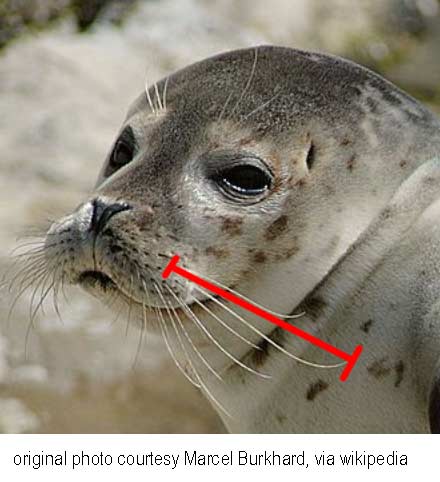In order to clear any doubts regarding the comparative growth rates of the whiskers of harbor seals (Phoca vitulina) and Steller sea lions (Eumetopias jubatus),
researchers at the Institute of Marine Science, University of Alaska
Fairbanks, and the Mystic Aquarium, CT, U.S.A. performed a series of
experiments in 2001.
The whiskers of participant seals and sea lions
were stable-isotope-labeled with Carbon 13 and Nitrogen 15, and whisker
growth rates were measured over a period of more than two years.
The results:
 Seals: The peak positions indicated that growth began in the
Seals: The peak positions indicated that growth began in the
fall, continued into spring, but ceased in June, with active growth
rates of 0.33 mm/day.
Sea Lions : After 427 days vibrissae in both sea lions showed
two peaks corresponding to the markers; growth rates were calculated as
0.05 to 0.07 mm/day.
And further: “A harbor seal’s vibrissae (~10 cm) tend to be similar
in length, while a Steller sea lion’s anterior mystacial vibrissae are
short (~6 cm) and the posterior vibrissae much longer (>20 cm)”
Growth rates of vibrissae of harbor seals (Phoca vitulina) and Steller sea lions (Eumetopias jubatus) was published in the Canadian Journal of Zoology, 2001, 79:(6) 1053-1061, and can be read in full here:


